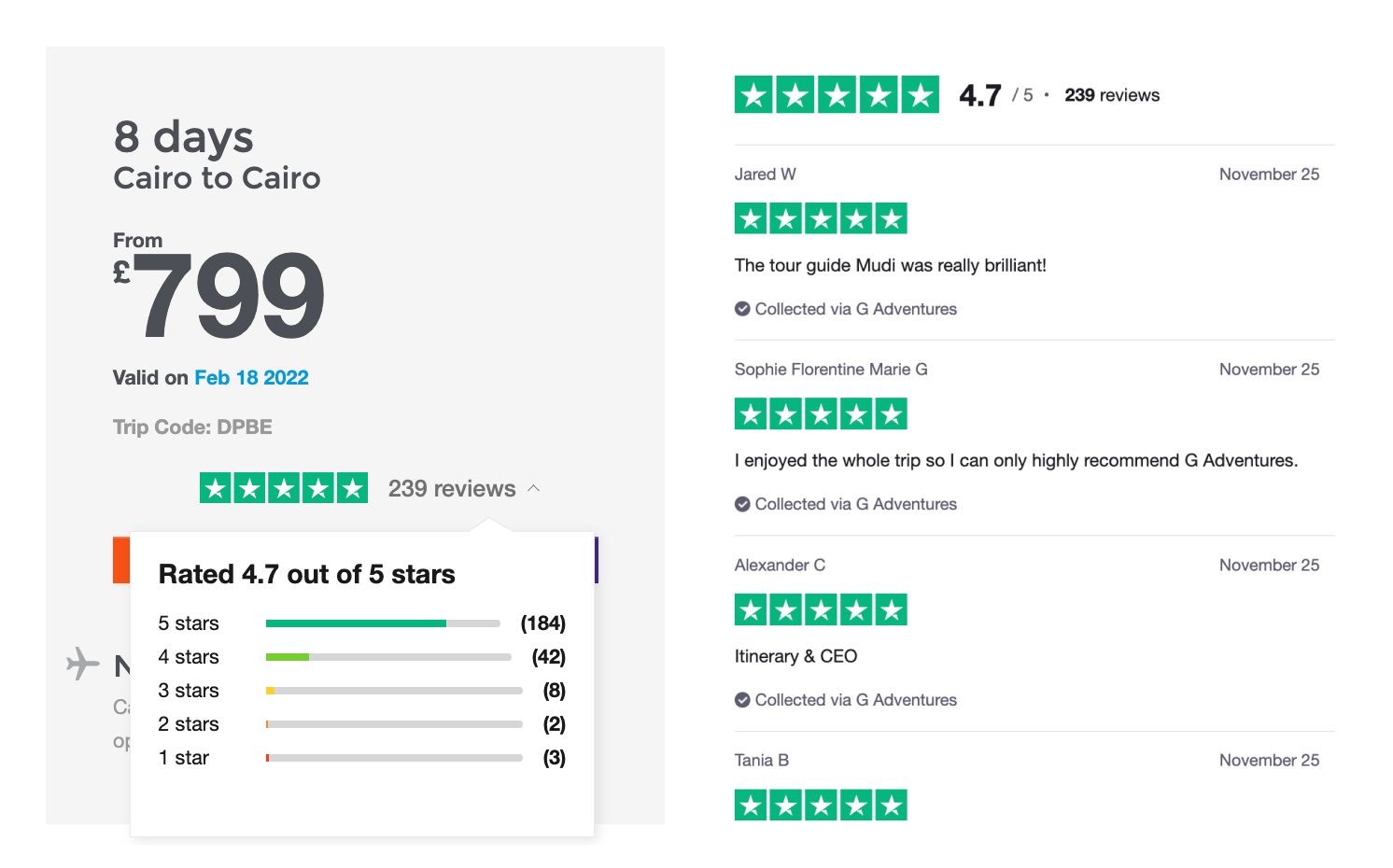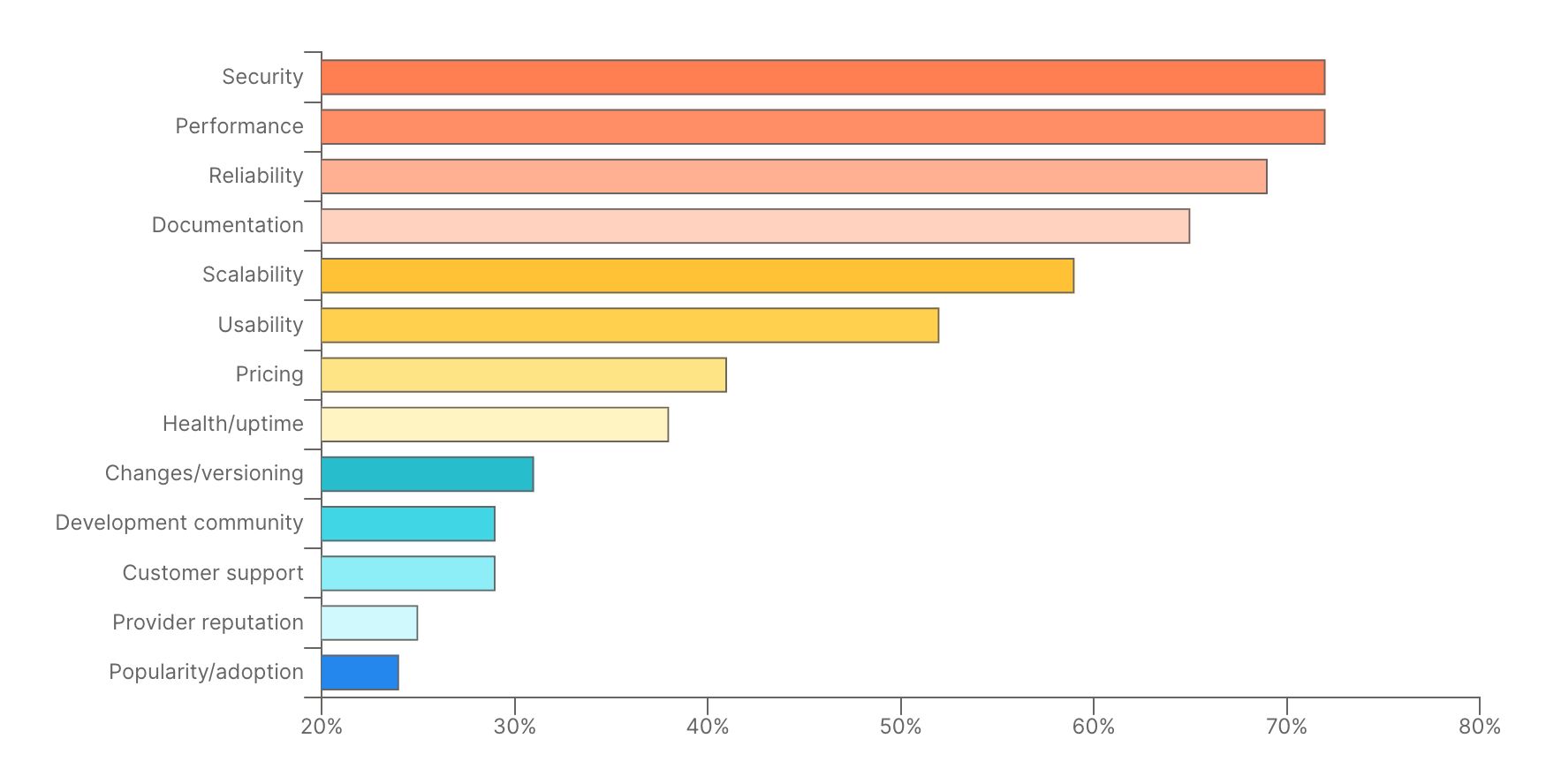Launching an online travel business has traditionally involved lots of systems, tools, and application programming interfaces (APIs) with ambiguous documentation and limited support. Just look around - there are thousands of APIs available for every type of project, product or business.
To create a great and sustainable business, you need to build great traveller experiences across web and mobile, and they need scalable, transparent, developer-friendly platforms to help them do that.
Building a travel API integration can be time-consuming - but it doesn’t have to be. Let's explore the considerations for building a reliable and scalable flights integration and how developer experience can be improved.
APIs are taking over the world - but not in travel
There are currently more than 24,000 APIs on the market according to ProgrammableWeb. The list of available APIs cover every business and every function. According to Google Cloud’s State of the API economy 2021 report, the majority of IT decision-makers see APIs as essential for a better customer experience and fast innovation. As a result of this drive The Global Application Development Software Market size is expected to reach £416 billion ($552 billion) by 2027.
Over the past decade, we have seen how APIs can shift how industries operate and fuel growth
Take payments and the launch of Stripe:
“Taking something as complex as credit card processing and reducing the integration to only a few lines of code that, when run, immediately returns a successful Charge object is really quite magical. Abstracting away the complexity of payments has driven the evolution of our APIs over the last decade.”
Stripe
…or AWS for cloud computing:
"Amazon Web Services (AWS) is now the world’s most comprehensive and broadly adopted platform for cloud computing and cloud services, offering over 200 fully featured services from data centres globally. This makes it faster, easier, and more cost effective to move existing applications to the cloud and build nearly anything you can imagine.”
Amazon Web Services
…or even Twilio for telecom:
Twilio is known for “democratising channels like voice, text, chat, video, and email through APIs, making it easy for every organisation to build meaningful interactions with customers on the channels they prefer. Chatting with customer support, receiving an appointment reminder, messaging your rideshare driver, getting a personalised coupon in your inbox, video conferencing with your doctor—all of those interactions can be powered by Twilio.”
Twilio
But one industry has been left relatively untouched until now - travel. Why is this the case when we have seen the success played out in other sectors? There are a lot of challenges when it comes to legacy travel technology.
Travel APIs began back in the 1970s-1980s when GDSs built a way for multiple providers like airlines and hotels to surface inventory that agents worldwide could access to search, book and pay.
If you consider how fast technology changes and that most of the legacy systems are still in use today, you can appreciate the inherent challenges that brings. It can take months to integrate even the basic search and book functionality, adding time and upfront costs for any integration. Plus, there will inevitably be edge cases you find over time and have to fix. With multiple scenarios and many partners involved, it can also be difficult to ensure that real-time information feeds through accurately to the end consumer.
Customer expectations are also increasing exponentially. With the pandemic, more automation and independence to manage bookings is required and systems are struggling to keep up with changing demands. But it’s not all bleak, there is innovation happening and advances in tools and technology that will better support travel sellers of tomorrow and companies like Duffel are helping to pave the way for new businesses to disrupt the industry.
Evaluating an API
With the growth of the API economy and more and more providers on the market, it’s not just a case of deciding whether you need an API, but also deciding which API is best for you.
There are a lot of aspects involved when exploring APIs, and if the purpose and requirements aren’t clear upfront, it can add a lot of time and complication to the entire process.
Here are 3 areas to evaluate when choosing a flights API:
- Capabilities
- Content
- Cost
1. Capabilities
The first thing to think about when investigating APIs is “What capabilities do I need?”. Will this API support our business needs today? How about 5 years from now? What are the limitations and how important are they to solve right now?
When looking at an API, buzzwords like “state-of-the-art” or “all-in-one solution” are quite common, but you need to look under the hood to verify the true API capabilities. For flight APIs, some companies offer only search and book functionality while others support the ability to add bags, reserve seats, include loyalty programme details, sell paid extras, and more. It usually isn’t easy to understand what capabilities are truly available without diving into the product and documentation.
In the industry, it's common to find lots of documentation that is gated or can only be accessed after a demo or call with a sales team. This can be very time-consuming - especially if the outcome is that the API doesn’t offer the functionality you need.
With Duffel, you can readily see what capabilities we provide - from search to book to extras - on our website. We make it easy for anyone to sign up and start using our product without needing to speak to anyone or work through a contract.
Beyond evaluating the capabilities of an API upfront, you also need to understand where the product is going and how you can access those features and upgrades. If there is a new product launch, you’ll want to understand whether you have to build it from scratch or get access to the feature automatically or have to request and wait for access.
One example for a flights API is the process for adding a new airline. With Duffel, we currently provide access to hundreds of airlines through our API as soon as you sign up. Whenever we add a new airline to our platform, we’ll turn it on for you automatically - although of course, you can opt out if you prefer. No changes to your API integration are required. Plus, all new product updates and airlines are added to our changelog so you’ll know when something is available.
2. Content
You need to confirm the content (airline inventory) that you will receive through the API. You’ll want to check exactly which airlines are available, how the content is being sourced, and how the airline prices compare.
To get access to flight content, some choose to integrate with a distribution partner such as a GDS to get access to multiple airlines at once.
Although a GDS integration solves for providing access to multiple airlines through one pipe, it won’t necessarily get you everything you need. For example, GDSs offer access to full-service carriers and low-cost carriers, but for low-cost carriers, the prices available tend to not be very competitive. Another example is how the content is being sourced and whether it is New Distribution Capability (NDC). NDC content allows you to improve product differentiation from rich content and increase the level of personalisation. GDSs mainly use Edifact as their content source today and so they don’t easily offer all the capabilities that NDC provides today.
You could choose to fill in the gaps by integrating with airlines directly - one by one. However, this option is very time-consuming and there are many challenges related to working with airlines directly on your own.
To demonstrate the time it takes to integrate with airlines and the different types of systems and processes you would come across, we’ve outlined 3 scenarios:

All this time and effort takes away from building a differentiated product and offering a better customer experience.
With Duffel, we give you both in one place. We work with various airlines’ APIs (e.g. Farelogix) to give you access to NDC content and expose it all through one easy-to-use API. We also supplement our direct content with content from a GDS to ensure you have the airline coverage you need for operating a global business. The full list of airlines is available to view at any time in our dashboard and we showcase the features available for each of our direct connect airlines on our website.

3. Costs
Outside of technical considerations, you also need to think about costs. How are you charged for the API? What is included? What is the total cost of ownership once you take into account the hidden costs of implementation and maintenance? Let’s break it down into 3 core areas: pricing, initial implementation, and ongoing management.
Pricing
APIs are commonly charged on a recurring basis for services they enable. You can usually expect to pick a tier based on the level of function you’re looking for or volume of transactions you need to process. It is common for usage to be monitored, as many providers will have overage fees if you go beyond what’s included in your contract. Flights APIs can become even more complex at the contract stage with required minimum booking commitments, implementation fees, look-to-book ratios, onboarding fees, and more.
Duffel’s pricing is purely pay for what you use, there are zero up-front costs and access to API testing environment is free. Volume discounts are applied automatically and all of our fees related to cancellations and ancillaries are transparent on our website. We also offer further discounts for a committed monthly spend if that works better for your business.
In looking at the costs associated, it is not only the pricing that matters but what the costs will look like over time. Total cost of ownership involves looking at the upfront costs associated with a product or service along with the long-term costs such as maintenance, downtime, training and operation.
Initial Implementation
When looking at costs associated with implementation, you’ll want to explore how you can make it easier and quicker for the team.
- What does the documentation look like?
- Are there client libraries available?
- How good is the test environment?
- Are there components available?
Documentation
Documentation also greatly varies across APIs - some offer tutorials and videos while others are more text-heavy, linking out to various secondary resources that take time to dig through. Some offer quick start guides and walk-throughs for every feature while others barely have documentation at all - you just have to explore for yourself!
At Duffel, we care about the documentation we provide our users, so our docs don’t just include a full reference, but also have tutorials and easy-to-follow guides to support you throughout the build process.
Client Libraries
There is so much boilerplate code to write before you can actually start building the integration for an API. A client library - sometimes known as a "software development kit" or SDK - takes care of the boring and repetitive bits for you. It's a pre-made bundle of code that developers can use to get building faster. Whether an API provider offers this can make a big difference to the costs of the initial implementation and ongoing maintenance.
For travel, it is not very common for client libraries to exist, however, Duffel currently offers open source client libraries for the following languages:
Check back soon as we are working on launching for PHP, .NET, and Java as well or learn more about our open source decision.
Test Environment
Another area that can improve the build of an API integration is a quality test environment, also known as a sandbox.
As Microsoft states, a test environment is “the place to safely explore, learn, demo, develop, and test the service without the risk of affecting the data and settings of your production environment.”
It simulates your production environment so you can learn how this API behaves alongside other applications to ensure it works as expected. It’s usually free of charge, so you can experiment without incurring high costs.
There are three key questions to ask yourself to understand the quality of the test environment:
-
How similar is it to the live (production) environment?
- If something works in the test environment, will it work when I go live? What changes?
-
Does it let me test the full range of scenarios that I need to support when I go live?
- Is it reliable?
- Does it have regular downtime that is going to interrupt my development process?
-
Can I keep access to it permanently so I can continually refine my integration?
Components
When building your product, you need to have a great user interface (UI). There are so many elements to a high quality flights experience (shopping, booking, ancillaries, etc.), and building all of those things from scratch is laborious.
You can build everything yourself painstakingly, or you can lean on work that others have done already. Components, also known as widgets, take the hardest bits out of your hands and allow you to get a great end product in customers’ hands with less work.
Common components you have likely used across websites include calendars, reservation windows, reviews, payment buttons like Paypal, stock information, or weather.

For flights, common components could be airport autocomplete, seat selection, baggage, or payments. With Duffel, we offer 2 pre-built components today with more on the way. Let’s do a quick dive into how our Seat Selection component works and adds value for a developer.
Our Seat Selection component allows you to launch a seat selection map on your website in no time. We take all the necessary information and nuances from the airlines and aircraft and present it in a way that your customers can easily see and understand. The component handles:
- Information: Seats on aircrafts can have lots of information attached to them - cost, restrictions, or extra legroom to name a few. We show the full context.
- Placement: Planes come in all shapes and sizes and even the same plane can have different seat configurations. We show your customer exactly where they'll be sitting. Learn more about the differences in our blog post “Falsehoods Programmers Believe About Aircraft Seat Maps”
- Responsiveness: Travellers expect to book from any device and selecting their ideal seat is no different. The Seat Selection Component is designed to provide a great experience whether your customer is booking from their phone, tablet or computer.
- Customisability: We know that continuity of user experience is important for every business. That’s why we have made it possible to customise the colours used in this component, so you can tune it to match your brand.
- Evolution: We will continue to make the component better and better over time, so once you’ve implemented it, you’ll benefit automatically as it evolves and improves.

Learn more about Duffel components.
Ongoing API management
When managing an API, you’ll need to consider the inherent maintenance involved alongside scalability and security.
Maintenance
For any API, you will likely run into bugs, changes, improvements, and downtime. There will be times where you may have high traffic volumes where something breaks or you could come across a rare server outage that you need to work-around. There could also be larger updates to the API that require you make changes within a certain window before that version gets turned off.
The level of effort involved for maintaining an API depends on the provider, product quality, and the timeliness and detail of the information they communicate.
For example, where is the communication shared? Are you sent emails or notifications? Is there a central location you can check on status?
How does the API status look over the last few months in terms of maintenance updates, bugs, errors or downtime?
How much notice will you get before “breaking changes” are made that force you to update your integration for it to keep working?
Is there support available if you have an issue you need help in resolving?
With Duffel, you can always monitor the status on our status page and we also have a versioning policy in place so you know what to expect. All of our API changes are posted to our changelog. Before we make any breaking changes, we'll email details to registered users as well. For each version, we also publish a migration guide from the previous version to the new one that explains the changes you need to make to upgrade your integration. And for our API client libraries, we update them when a new version is released so that they're always on the latest version.
We also handle all updates, maintenance and bugs from the airline directly so you only need to manage one API and we have FAQs available plus a support team to answer any technical questions you may have that aren’t available through the resources above.
Scalability
You’re aiming for growth when building a business but it may also become a concern if API performance is impacted by that growth.
When selecting an API provider, you'll likely work through a Service Level Agreement (or SLA) that defines the level of service that will be provided which could include quality, availability, and responsibilities. You can also review any rate limits to understand where there could be potential roadblocks as the business scales.
Outside of contractual aspects, scalability could involve looking into how the provider or your team can build automation or processing capacity to work more efficiently.
Overall, communication between you and your provider is important to understand potential risks upfront, align on expectations, and share updates to support scalability (and reliability) into the future.
Security
A flights API is going to have access to passengers’ personal data, so working with a provider that keeps that data secure is crucial
Gartner predicts that "by 2022, application programming interface (API) attacks will become the most-frequent attack vector, causing data breaches for enterprise web applications. Already, many well-publicised API security vulnerabilities affected a wide range of organisations.”
In Postman’s State of API Report 2021, when asked what factors are considered before integrating with an API, the top factor of survey respondent was security.

How the API provider explores potential vulnerabilities, implements security testing, and sets standards for the company to operate under will be more important than ever before.
At Duffel, we are very upfront about how seriously we take our security - keeping our customers' data safe is one of our highest priorities. We have strict security protocols in place and also offer a bug bounty programme for discovering a vulnerability. We also provide documentation on compliance, set up token scanners, run regular PCI DCC audits, and complete penetration testing twice a year to ensure we monitor and address any potential risks.
5 misconceptions of starting a travel business
Picking the right API sets the foundation for your business. The more you can ensure that an API is easy to understand, quick to get up and running, reliable and secure, the more successful you will be in building your travel business. At Duffel, this is our mission. Check out our docs or get started with our API today.
If you’ve followed along in the series 5 misconceptions to starting a travel business in 2022, you have now gone from idea to implementation and have learned about the industry, regulations, payments, travel operations, and APIs.
At Duffel, we’re always here to help get your idea or business off the ground. Send us your questions or feedback on our social channels, contact us, or subscribe to email to receive more insights, news and inspiration.


Latest posts
Rippling chooses Duffel to power Rippling Travel
Data-Driven Travel: Using Analytics from the Duffel API to Make Smarter Business Decisions
Our latest blog post explores how companies and developers can use this tool to make smarter business decisions. Learn how to leverage booking data, implement dynamic pricing models, and use predictive modeling for future planning.

How to Take Flight: Accessing Airline Booking Capabilities to Sell Tickets
Selling flights can level-up your customer offerings... but it's complex! Our latest blog simplifies the process.

Rippling chooses Duffel to power Rippling Travel
API
Data-Driven Travel: Using Analytics from the Duffel API to Make Smarter Business Decisions
Our latest blog post explores how companies and developers can use this tool to make smarter business decisions. Learn how to leverage booking data, implement dynamic pricing models, and use predictive modeling for future planning.
How to Take Flight: Accessing Airline Booking Capabilities to Sell Tickets
Selling flights can level-up your customer offerings... but it's complex! Our latest blog simplifies the process.